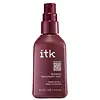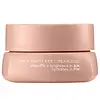What's inside
What's inside
 Key Ingredients
Key Ingredients

No key ingredients
 Benefits
Benefits

 Concerns
Concerns

 Ingredients Side-by-side
Ingredients Side-by-side

Salicylic Acid 2%
MaskingWater
Skin ConditioningAlcohol Denat.
AntimicrobialButylene Glycol
HumectantPPG-26-Buteth-26
Skin ConditioningPEG-40 Hydrogenated Castor Oil
EmulsifyingPhenoxyethanol
PreservativeGlycerin
HumectantMentha Piperita Oil
MaskingSodium Hydroxide
BufferingGlycyrrhiza Glabra Root Extract
BleachingMenthol
MaskingT-Butyl Alcohol
PerfumingDenatonium Benzoate
MaskingLimonene
PerfumingLinalool
PerfumingWater
Skin ConditioningGlycerin
HumectantPropanediol
SolventHdi/Trimethylol Hexyllactone Crosspolymer
Phenoxyethanol
PreservativeSodium Polyacrylate
AbsorbentAcrylates/C10-30 Alkyl Acrylate Crosspolymer
Emulsion StabilisingSqualane
EmollientAscorbyl Glucoside
AntioxidantCaffeine
Skin ConditioningSodium Hydroxide
BufferingEthylhexylglycerin
Skin ConditioningHydrogenated Lecithin
EmulsifyingHydrolyzed Sodium Hyaluronate
Skin ConditioningSodium Phytate
Silica
AbrasiveSodium Carbonate
BufferingCaprylic/Capric Triglyceride
MaskingC15-19 Alkane
SolventCetearyl Alcohol
EmollientGlyceryl Stearate Se
EmulsifyingCetearyl Glucoside
EmulsifyingStearic Acid
CleansingAllantoin
Skin ConditioningPanthenol
Skin ConditioningBisabolol
MaskingSodium Polyacrylate Starch
AbsorbentCeramide NP
Skin ConditioningArginine
MaskingHyaluronic Acid
HumectantCamellia Oleifera Seed Oil
Skin ConditioningPolyglyceryl-10 Stearate
Skin ConditioningCalendula Officinalis Flower Extract
MaskingChamomilla Recutita Flower Extract
MaskingRosmarinus Officinalis Leaf Extract
AntimicrobialSucrose Stearate
EmollientSodium Lauroyl Lactylate
EmulsifyingGlucose
HumectantZingiber Officinale Root Extract
MaskingCeramide AP
Skin ConditioningPhytosphingosine
Skin ConditioningCholesterol
EmollientXanthan Gum
EmulsifyingCarbomer
Emulsion StabilisingCeramide EOP
Skin ConditioningTocopherol
AntioxidantWater, Glycerin, Propanediol, Hdi/Trimethylol Hexyllactone Crosspolymer, Phenoxyethanol, Sodium Polyacrylate, Acrylates/C10-30 Alkyl Acrylate Crosspolymer, Squalane, Ascorbyl Glucoside, Caffeine, Sodium Hydroxide, Ethylhexylglycerin, Hydrogenated Lecithin, Hydrolyzed Sodium Hyaluronate, Sodium Phytate, Silica, Sodium Carbonate, Caprylic/Capric Triglyceride, C15-19 Alkane, Cetearyl Alcohol, Glyceryl Stearate Se, Cetearyl Glucoside, Stearic Acid, Allantoin, Panthenol, Bisabolol, Sodium Polyacrylate Starch, Ceramide NP, Arginine, Hyaluronic Acid, Camellia Oleifera Seed Oil, Polyglyceryl-10 Stearate, Calendula Officinalis Flower Extract, Chamomilla Recutita Flower Extract, Rosmarinus Officinalis Leaf Extract, Sucrose Stearate, Sodium Lauroyl Lactylate, Glucose, Zingiber Officinale Root Extract, Ceramide AP, Phytosphingosine, Cholesterol, Xanthan Gum, Carbomer, Ceramide EOP, Tocopherol
Ingredients Explained
These ingredients are found in both products.
Ingredients higher up in an ingredient list are typically present in a larger amount.
Glycerin is already naturally found in your skin. It helps moisturize and protect your skin.
A study from 2016 found glycerin to be more effective as a humectant than AHAs and hyaluronic acid.
As a humectant, it helps the skin stay hydrated by pulling moisture to your skin. The low molecular weight of glycerin allows it to pull moisture into the deeper layers of your skin.
Hydrated skin improves your skin barrier; Your skin barrier helps protect against irritants and bacteria.
Glycerin has also been found to have antimicrobial and antiviral properties. Due to these properties, glycerin is often used in wound and burn treatments.
In cosmetics, glycerin is usually derived from plants such as soybean or palm. However, it can also be sourced from animals, such as tallow or animal fat.
This ingredient is organic, colorless, odorless, and non-toxic.
Glycerin is the name for this ingredient in American English. British English uses Glycerol/Glycerine.
Learn more about GlycerinPhenoxyethanol is a preservative that has germicide, antimicrobial, and aromatic properties. Studies show that phenoxyethanol can prevent microbial growth. By itself, it has a scent that is similar to that of a rose.
It's often used in formulations along with Caprylyl Glycol to preserve the shelf life of products.
Sodium Hydroxide is also known as lye or caustic soda. It is used to adjust the pH of products; many ingredients require a specific pH to be effective.
In small amounts, sodium hydroxide is considered safe to use. However, large amounts may cause chemical burns due to its high alkaline.
Your skin has a natural pH and acid mantle. This acid mantle helps prevent harmful bacteria from breaking through. The acid mantle also helps keep your skin hydrated.
"Alkaline" refers to a high pH level. A low pH level would be considered acidic.
Learn more about Sodium HydroxideWater. It's the most common cosmetic ingredient of all. You'll usually see it at the top of ingredient lists, meaning that it makes up the largest part of the product.
So why is it so popular? Water most often acts as a solvent - this means that it helps dissolve other ingredients into the formulation.
You'll also recognize water as that liquid we all need to stay alive. If you see this, drink a glass of water. Stay hydrated!
Learn more about Water